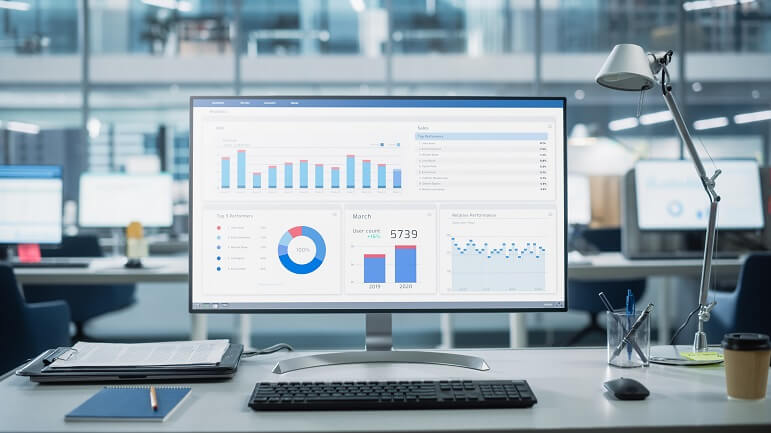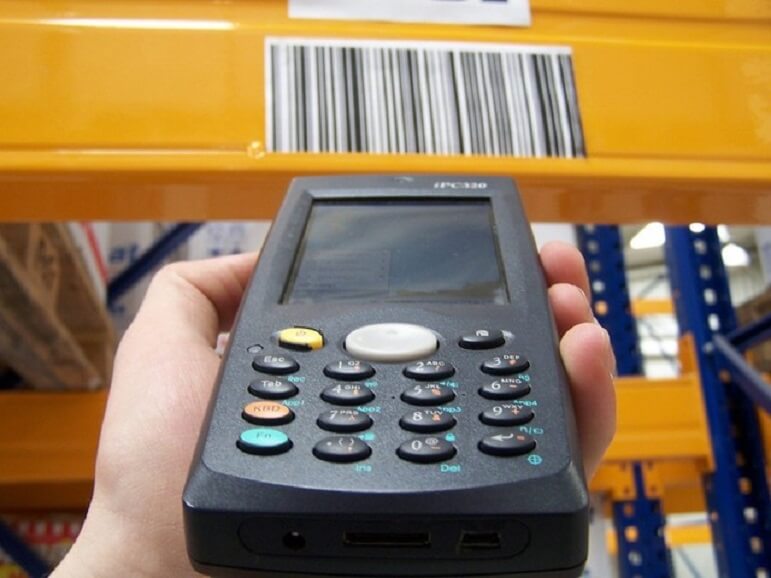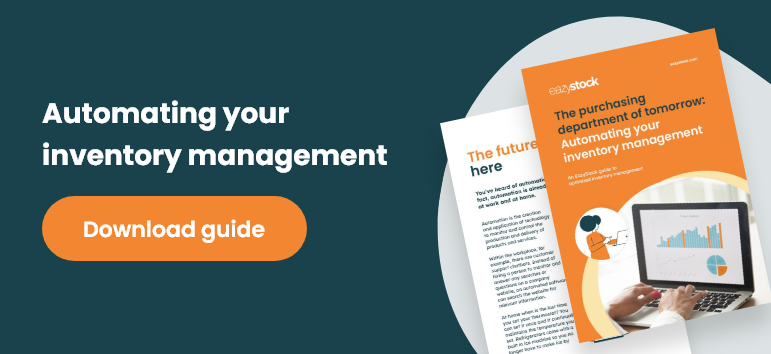Distribution Software Explained: What Is It & Benefits
The importance of distribution software
When the cost of raw materials and finished goods starts to soar, it’s critical for wholesalers and distributors to control their operational costs to remain competitive and achieve decent profit margins.
This is where supply chain digitalization projects can help to automate simple processes, improve efficiency and save money.
There are a host of distribution software systems that manage internal and external supply chain workflows. From controlling inventory to providing quoting processes and managing suppliers to delivering warehouse management capabilities, such as picking, packing, and shipping.

Distribution software benefits
Distribution software can bring many benefits to inventory management teams, and the wider business, including:
Accurate demand forecasting
Finding optimal healthy stock levels isn’t easy. Overstocking ties up working capital and can result in obsolete stock that becomes hard to sell. Understocking increases the risk of stockouts, which leads to missed sales and affects profits. With accurate demand forecasting information, inventory managers can set optimal stock levels to meet demand while keeping costs to a minimum.
Real-time tracking
Real-time tracking information lets you track orders from the moment you receive them. The system will monitor picking and packing to fulfillment, shipping, and delivery. You can improve customer service by providing accurate arrival information to customers. You’ll also know when they’ve accepted the delivery and can monitor any returns.

Improved efficiency
Automated processes from distribution software make it quicker and easier to provide reports and highlight changes in the market. Reducing manual processes saves time, reduces human error, and improves accuracy. This provides more time for strategic planning and reduces fire-fighting, providing better responsiveness to market changes and supply chain challenges.
Better supplier and customer management
As distributors and wholesalers are usually the middlemen, distribution software allows you to manage suppliers (often manufacturers) and end users. Positive supplier and customer relationships help achieve growth.
Distribution software solution types and capabilities
As different distribution software solutions are available, we explain some of the most commonly used by distribution and wholesale operations.
Supplier relationship management (SRM) software
This software enables procurement managers to forge close links with their suppliers and manage the whole procurement process. It helps them establish supplier capability to deliver on lead times, ensuring product availability to keep end customers happy.
SRM software also provides all the data needed to empower procurement managers to negotiate bulk discounts and reduce carriage costs.
It can also analyze supplier performance and run scenario planning based on different criteria, such as lead times or unit costs, to see which supplier can meet requirements.
Customer relationship management (CRM) software
CRM software provides a platform to manage customers along the supply chain, including end customers and suppliers. It stores supplier, customer, and order data, often from their first contact with the business through to sale, and then helps manage any queries or further communications. Collating customer communications and order information in one available place across the business facilitates supply chain management, which is essential for retaining customer confidence.
Warehouse management system (WMS) software
This is the most important software used in warehouse operations.
WMS automate warehousing processes and monitor stock levels – often in real-time. This facilitates stock control – tracking goods from the moment they enter the business until they leave. WMS systems not only keep track of stock levels but also locations in the warehouse to optimize space. Some also produce picking lists and dispatch notes, and offer support with replenishment calculations.

Enterprise resource planning (ERP) software
This software is usually the backbone of a business as it links most systems together. An ERP collates data from all other packages to give an overview of the core business operations. As well as integrating steps in the supply chain, ERP software can provide support functions, including finance, HR, project and risk management, with reporting data from across the whole process. The software’s data improves the quality of decisions made at the executive level.
Inventory optimization software
Inventory optimization balances stock availability with the lowest possible inventory investment. It allows businesses to ensure they have the right items in stock while reducing inventory costs and minimizing the risk of excess stock. This is done by forecasting demand and managing supply variables while dynamically adjusting stock rules and inventory parameters.
Inventory optimization is efficiently and cost-effectively having the right products in the right place at the right time. You can find out more about inventory optimization in our whitepaper.
Inventory optimization software identifies demand types for each stock item and considers seasonality, trends, promotions, and new products when forecasting demand. It can also provide information about the risk of stock outs, lead times, safety stock quantities, and re-order points.
Best practices for choosing software systems
Choosing the most suitable software can be confusing and overwhelming, so here are some tips to help you.
Consider the needs of the organization
Ensure you carry out a full audit of your business’s requirements – considering what you need both today and in the future. Do you need a software system that can be tailored to your existing processes or a complete efficiency overhaul? Is it your system or business processes that need to change? For example, do you need an ERP upgrade and replacement when reviewing your ERP?
Consider a system that integrates with other software packages
The best business systems will allow additional software plug-ins and add-ons that enhance specific functionality. This ensures you have all the necessary system capabilities and the ability to evolve as your business grows.
All software functions should connect under one umbrella system for employees to access all information from one single interface. This creates synergy – all organizational operations should integrate seamlessly to ensure the business is greater than the sum of its parts.
How EazyStock can help
EazyStock is inventory optimization software that integrates with current business systems or ERPs. Book a demo to find out how to save valuable inventory management team time and resources for analysis and strategic decisions.








